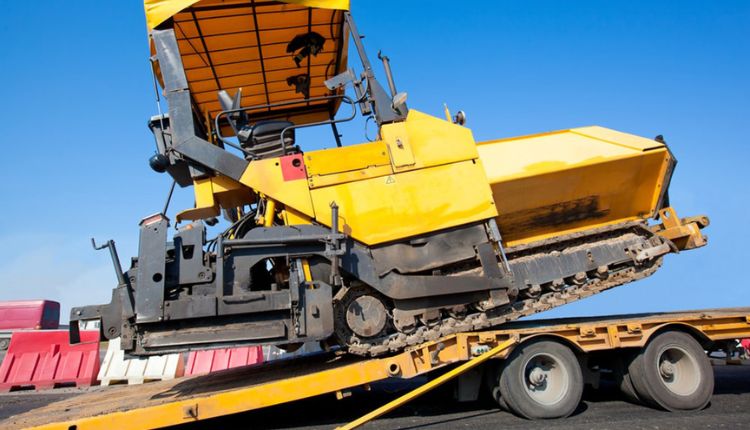Transporting heavy equipment is no small feat. Whether you’re moving gold mining equipment or other industrial machinery, the challenges are plenty. Without proper planning, these massive operations can lead to damaged equipment, safety hazards, or costly delays. This guide will help you transport heavy equipment safely and with confidence by providing practical tips and expert advice.
1. Assess the Equipment and Its Specific Requirements
Before moving heavy equipment, the very first step is a complete assessment of what you’re working with. Different machinery has varying specifications, such as weight, height, and special handling requirements, and these must dictate your approach.
- Know the Equipment’s Dimensions: Measure the length, height, and width of the equipment. This helps you select the right transport vehicle and understand possible road or clearance restrictions.
- Weight Matters: Identify the exact weight to avoid overloading vehicles, which can cause accidents. Heavy machinery can weigh several tons, so accuracy is critical.
- Special Handling Needs: Determine if parts of the equipment, such as delicate components or hydraulic arms, need to be secured separately.
For example, when transporting complex pieces like tall cranes or oversized gold mining equipment, you may need a custom transportation plan to ensure safety and regulatory compliance.
2. Choose the Right Transportation Equipment
Selecting the appropriate vehicle is crucial to keeping your machinery safe and stable during transit. Options like flatbeds, lowboy trailers, and multi-axle trucks are commonly employed in heavy equipment transportation.
- Flatbeds: Best suited for general heavy equipment with standard dimensions.
- Lowboy Trailers: Perfect for oversized machinery with low ground clearance, thanks to their drop-deck design.
- Special Permits for Oversized Loads: If your equipment exceeds standard legal dimensions, you may need special permits and escort vehicles for transport.
Ensure your transport partner has expertise in handling heavy machinery to maximize safety and efficiency.
3. Follow Proper Loading and Unloading Protocols
Incorrect loading and unloading are common causes of equipment damage. A systematic approach is essential to ensuring these tasks are carried out safely.
- Use Trained Personnel: Always work with experienced staff or contractors who know how to load and unload heavy equipment properly.
- Leverage Safety Gear: Utilize ramps, cranes, or hydraulic lifters when dealing with extremely heavy or large components.
- Avoid Overhanging or Imbalanced Loads: Ensure the weight is evenly distributed to prevent accidents during transit.
For instance, improper balancing could lead to tipping during turns or while crossing uneven terrain. Take extra precautions to secure towering components or fragile pieces.
4. Secure the Equipment
No matter how short the distance, equipment must be securely fastened to avoid shifts during transport. Unsecured machinery can lead to catastrophic accidents, damaging the equipment and jeopardizing public safety.
- Use High-Quality Tie-Downs: Chains, straps, and binders should be made from durable materials capable of withstanding the weight and forces involved.
- Check Anchor Points: Ensure the machinery is tethered to secure anchor points on the transport trailer.
- Double-Check Stability: Conduct final inspections to confirm there’s no unnecessary movement.
Proper securing of machinery not only ensures safety but also prevents any regulatory violations during transit.
5. Plan Your Route in Advance
Heavy equipment often requires highly specific travel routes to minimize risks and meet legal requirements. Without proper planning, you could face obstacles like low-clearance bridges or unsuitable road conditions for oversized loads.
- Identify Restrictions: Check for restrictions such as weight limits, height clearances, and road surface conditions.
- Consider Escort Vehicles: For oversized machinery, escort vehicles may be necessary to provide additional guidance and safety.
- Account for Weather: Avoid scheduling heavy equipment transport during severe weather conditions, as this can lead to delays and safety hazards.
Route planning is especially vital when transporting equipment across state lines, where regulations can change.
6. Understand and Comply with Regulations
Regulatory compliance is non-negotiable. Failure to adhere to local, state, or federal transport laws can result in hefty fines or delays that impact project timelines.
- Permits: Secure any required permits for oversized or overweight loads. These permits often contain specific instructions to ensure safety on public roads.
- Follow Speed and Weight Limits: Even with permits, drivers must adhere to posted speed and weight limits to avoid penalties.
- Inspection Requirements: Certain jurisdictions may require inspections mid-transit, especially for unusually large or heavy loads.
For example, many states require permits specifically for the transport of specialized equipment like gold mining equipment. Ensure you conduct thorough research to stay compliant.
7. Conduct Inspections Before and After Transport
Lastly, comprehensive inspections are critical before and after transportation. Not only does this reduce the risk of damage, but it also gives you the peace of mind that your machinery is in optimal condition.
- Pre-Transport Inspection: Check for loose or damaged parts and ensure all fluids (lubricants, fuel, etc.) are secure.
- Post-Transport Inspection: Confirm the equipment arrived without any damage during transit, and address any potential issues immediately.
- Keep Detailed Records: Document every step of the inspection process with photos and notes for reference or future claims if issues arise.
Final Thoughts
Transporting heavy equipment is a complex process, but with thorough preparation and attention to detail, you can complete the task safely and confidently. By assessing each step—from choosing appropriate transportation methods to meeting regulatory requirements—you ensure your machinery arrives intact and ready for use.
Integrate these steps into your logistics planning to streamline future transports, reduce risk, and maintain your equipment’s longevity.






